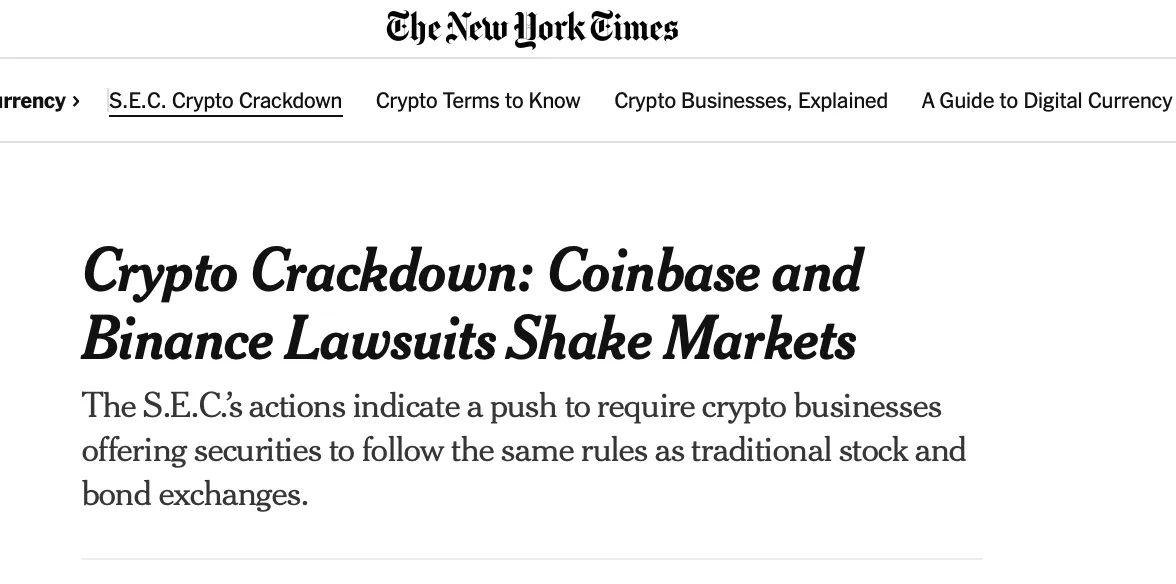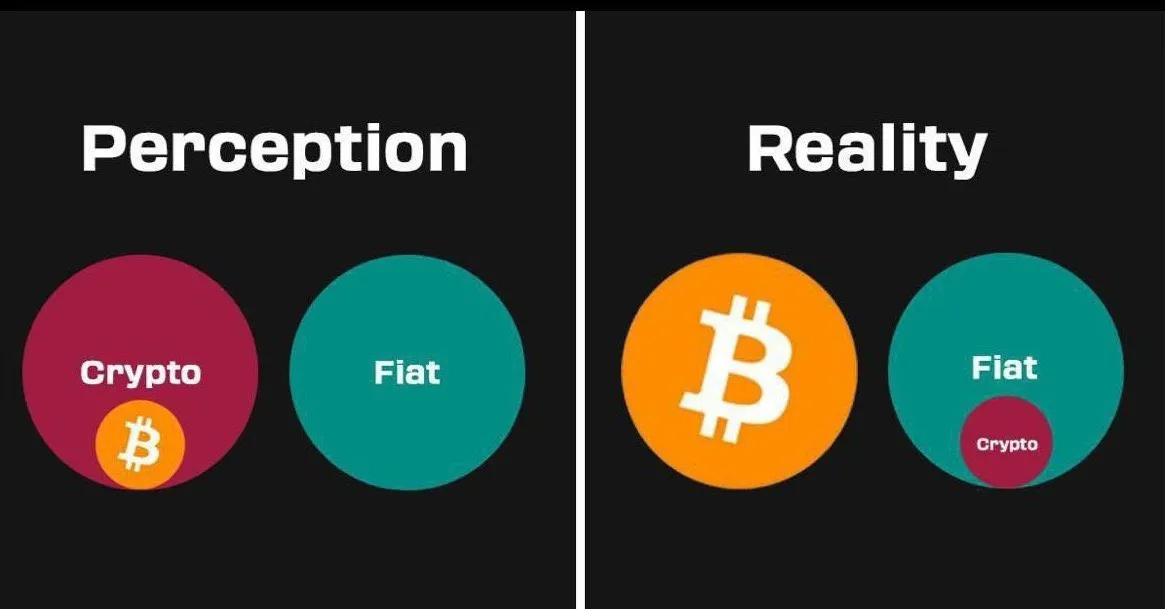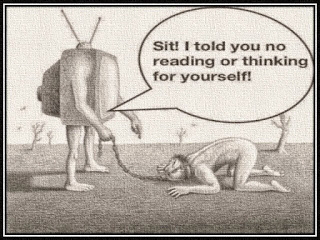Monday, June 12, 2023
Zuckerberg Admits Censoring True Information For Establishment Undermined Trust
Sunday, June 11, 2023
Don't shed a tear for the 'crypto' industry, a hype chasing scammer's paradise
Contrary to popular belief, “crypto” assets largely do not share some or any of the properties of bitcoin. It is nothing more than the fiat system on steroids. The vast majority of crypto tokens have an incredibly centralized command structure and resemble nothing close to the monetary properties of bitcoin other than the fact that both are accessible via the internet. Sure, the SEC or other government agencies could decide to “go after” Bitcoin (even though SEC chair Gary Gensler has made it clear that Bitcoin is not a security), but Bitcoin is globally distributed and well positioned to withstand and even thrive long term from such an attack.
Binance and Coinbase, two major institutions that are currently being targeted by the SEC, indeed deserve recognition for their efforts to bring bitcoin adoption to the world. For several years, these exchanges, among others, broke new ground by facilitating a much easier and more transparent means to purchase and store bitcoin in an expedited fashion.
Friday, June 9, 2023
Taliban successfully eradicates poppy cultivation: Report
Afghan poppy cultivation, which long provided most of the world’s heroin supply, flourished for decades due to US intervention in the country
Toor Khan (right) razing a poppy field to the ground along with fellow Taliban members. (Photo Credit BBC)
The Taliban government of Afghanistan has carried out “truly unprecedented reductions in poppy cultivation” in 2023, according to a new analysis published by Alcis, a UK-based geographic information services firm specializing in geospatial data collection, statistical analysis and visualization.
The poppy reduction followed a ban on drugs in Afghanistan issued in April 2022 by Taliban leader Mullah Haibatullah, only seven months after the Islamic movement took power following the August 2021 US military withdrawal from the country.
Alcis reports that an effective ban on poppy cultivation is in place and that opium production in 2023 will be negligible compared to 2022. High resolution imagery analyzed by the firm shows that in the province of Helmand, poppy cultivation was reduced from 120,000 hectares in 2022 to less than 1,000 hectares in 2023. This amounts to the largest reduction in poppy cultivation ever recorded in the country, including after the Taliban banned poppy production in 2000, one year before losing power following the 2001 US invasion.
As a result, wheat cultivation now dominates provinces in the south and southwest, where some 80% of Afghanistan’s total poppy crop had previously been grown.
The Taliban announced the ban on poppy cultivation in April 2022, but allowed the harvest of the poppy crop planted in the fall of 2021, fearing that banning or destroying it so close to the harvest season and after farmers had invested considerable time and resources in their poppy fields would provoke widespread unrest.
The Taliban then banned the planting of new poppy crops moving forward and destroyed any poppy fields planted after that time in violation of the ban.
Over the course of the summer of 2022, the Taliban also targeted the methamphetamine industry by destroying the ephedra crop and ephedrine labs across the country.
These findings were confirmed by journalists from the BBC, who traveled to Afghanistan this month while embedded with Taliban members destroying remaining poppy fields with sticks.
The BBC noted that the loss of supply of Afghan heroin may lead to increases in the “synthetic drugs, which can be far more nasty than opium,” among US and European drug users.
The BBC noted further that “opium was also grown freely in areas controlled by the US-backed former Afghan regime, something the BBC witnessed prior to the Taliban takeover in 2021.”
Indeed, the heroin trade has played a role in the conflicts plaguing the war-torn country since the 1970s.
In the late 1970s and in the 1980s, the CIA relied on Pakistan’s Inter-Services Intelligence Agency (ISI) and its Afghan mujahideen clients to wage war against the Soviet-backed Afghan government, and against Soviet forces which occupied the country in support of the government.
According to historian Alfred McCoy, the ISI, and mujahideen soon became key players in the burgeoning cross-border opium traffic.
McCoy writes that “The CIA looked the other way while Afghanistan’s opium production grew from about 100 tonnes annually in the 1970s to 2,000 tonnes by 1991. In 1979 and 1980, just as the CIA effort was beginning to ramp up, a network of heroin laboratories opened along the Afghan-Pakistan frontier. That region soon became the world’s largest heroin producer. By 1984, it supplied a staggering 60% of the US market and 80% of the European.”
McCoy writes further that, “Caravans carrying CIA arms into that region for the resistance often returned to Pakistan loaded down with opium – sometimes, reported the New York Times, ‘with the assent of Pakistani or American intelligence officers who supported the resistance.’”
As reporting from journalist Gary Webb showed, the CIA was transporting weapons by plane to its proxy army in Nicaragua, the Contras, while the planes returned to the US loaded with cocaine, during this same period. Declassified US government documents later acknowledged that US officials relied on the drug trade to fund arms purchases for the Contras.
The Soviet withdrawal from Afghanistan in 1989 was followed by years of chaos as warlords competed for control of the country. In 1996, the Taliban came to power and imposed a measure of order on the country. In 2000, the Islamic movement banned poppy production.
However, US forces invaded Afghanistan in October 2001 and quickly toppled the Taliban. Poppy cultivation and the heroin trade flourished.
In 2004, Antonio Maria Costa, Executive Director United Nations Office on Drugs and Crime, reported that opium cultivation increased by two-thirds that year and had spread to all 32 provinces, “making narcotics the main engine of economic growth” in the country.
In 2010, a growing Taliban insurgency prompted President Obama to launch his Afghan surge, which sent an additional 17,000 US troops to the country. The surge was launched at Marja, a remote market town in Helmand province.
Alfred McCoy writes that, “As waves of helicopters descended on its outskirts spitting up clouds of dust, hundreds of marines sprinted through fields of sprouting opium poppies toward the village’s mud-walled compounds. Though their targets were the local Taliban guerrillas, the marines were, in fact, occupying one of the capitals of the global heroin trade.”
McCoy noted further that the US-backed “Afghan army seemed to be losing a war that was now driven – in ways that eluded most observers – by a battle for control of the country’s opium profits. In Helmand province, both Taliban rebels and provincial officials are locked in a struggle for control of the lucrative drug traffic.”
As Simon Spedding of the University of South Australia observed, “The simple facts are that opium production was high under the US-influenced government of Afghanistan of the 1970s, decreased 10-fold by 2001 under the Taliban, and then increased 30-fold and more under the US to the same level as in the 1970s … These are facts, whereas the idea that the CIA runs opium from Afghanistan would be a conspiracy theory—unless, you thought about the United Nations statistics or happened to have been to Afghanistan.”
WEF document calls for limiting ‘private car use,’ drastic reduction in the number of cars by 2050
The globalist World Economic Forum (WEF) is encouraging cities to “contain growth of private car use” and aims to drastically reduce the number of cars by 2050, according to a recently published white paper. The document relies on the usual falsified climate change data and dishonest models and ignores the looming population collapse which many have been warning the world is facing.
The briefing paper titled “The Urban Mobility Scorecard Tool: Benchmarking the Transition to Sustainable Urban Mobility” was published by the WEF in collaboration with Visa in May 2023.
The document advocates for increased “shared, electric, connected and automated (SEAM) transport modes and a shift to more compact cities” in order to reduce the number of cars by 2050 to 500 million worldwide and drastically reduce carbon emissions.
“No one city, or one company, can achieve this vision alone,” the paper reads. “Through strong public-private collaboration, we can find innovative, impactful, and context-sensitive solutions for mobility to enable a sustainable future for cities.”
According to carsMetric, there are currently over 1.45 billion cars in the world, and the WEF projects that number to go up to 2.1 billion by 2050 if we remain on the current trajectory. A reduction to 500 million cars would therefore present a reduction of the number of cars by over 75%.
The WEF recently ran a trial of its Urban Mobility Scorecard Tool and chose Buenos Aires, Argentina, Curitiba, Cota Rica, and Singapore as trial cities.
READ: World Economic Forum’s ‘15-minute cities’ are a godless inversion of the Christian order
The white paper by the WEF names containing “the growth of private car use by boosting public transport, cycling, and shared mobility services” as a major “ambition area” for Buenos Aires.
“The capital of Argentina is seeking to enhance sustainable mobility to keep people moving while offering more connected, integrated transport,” the paper states.
The city is also “embracing new solutions to reduce private car dependency and provide a well-integrated, multimodal transport system,” according to the WEF.
It has become apparent that the unelected elites at the WEF and other globalist organizations not only seek to replace gas-powered cars with electric cars, but to radically reduce private car ownership in general.
Journalist Tim Hinchliffe, editor of The Sociable, pointed out that “[t]he Urban Mobility Scorecard Tool white paper gives further credence to the WEF’s prediction that by 2030 ‘You’ll own nothing. And you’ll be happy.’”
The "people" will be your children.
They have been/will be further indoctrinated to give up their rights.
See the 2022 Ontario Science Curriculum: 15 mentions of human caused climate change, which is not true.
I call for the complete elimination of the WEF, UN, WHO, climate change organizations, Davos meetings, and any related efforts by globalist elite by 2025.
Wednesday, June 7, 2023
Hands in pockets body language
Keeping your hands in your pockets is one of those body language gestures that can have multiple, seemingly contradictory meanings. In body language, the meaning of some gestures is straightforward. You only need to observe one or two gestures to reach a conclusion.
In other cases, such as the ‘hands in pockets’ gesture, you need to look at the context of the situation and accompanying gestures (gesture cluster) to reach a sound conclusion.
In this article, I’ll discuss what the ‘hands in pockets’ gesture and its variations mean. I’ll also give reasons behind the various meanings.
Hands in pockets meaning
First, we’ll eliminate the non-psychological reasons why people put their hands in their pockets. For example, feeling cold or checking your keys. Another example would be a situation where you have nothing better to do with your hands like when you’re waiting for someone.
We’re not concerned with these but you should keep them in mind.
Now, let’s look at the psychology of putting your hands in your pockets.
With body language gestures that are vague, ambiguous, and hard to interpret, it’s best to look at the opposite gesture. The meaning opposite to the meaning of the opposite gesture would be the meaning of the vague gesture.
So, to understand the mental state of a person with their hands in their pockets, ask yourself:
“What does it mean when someone doesn’t have their hands in their pockets?”
When you talk to someone who doesn’t have their hands in their pockets, they come across as open, trustworthy, and secure.
Showing your hands and moving your arms freely in social interactions signals openness and confidence in expressing yourself with your body.
Body language doesn’t lie. People who are open and confident naturally talk with their hands and bodies.
Not showing your hands by keeping them in your pockets sends the opposite signal. It indicates defensiveness and insecurity. It’s a ‘closed’ body language gesture. When you assume this gesture, you’re closing others off. You’re hiding yourself from others.
Retreating your hands in your pockets in a social context communicates:
“I don’t want to engage with you.”
Social anxiety
Social anxiety is probably the number one reason why someone would close themselves off from others.
If you’re socially anxious, you may have noticed that you hardly keep your hands in your pockets in a non-threatening situation (like your home). But when you go out, social anxiety kicks in, and you frequently find yourself with your hands in your pockets.
Having hands in pockets signals discomfort, and people can sense it, even if they can’t put a finger on it. When they interact with you, they’ll sense something is off.
To test this, see what happens the next time you’re having an open, friendly conversation with someone and suddenly put your hands in your pockets. Most likely, the conversation will die down.
Your closing off may trigger their closing off. They may put their hands in their pockets too, or only retreat from the conversation mentally.
An attempt to comfort
In body language, there’s a class of gestures called self-soothing gestures. When we’re anxious and nervous, we need to soothe ourselves physically. One way of doing it is by touching your face. Another is wringing your hands.
When you feel insecure and uncomfortable in a social situation, putting your hands in your pockets provides a sense of security and comfort, like retreating into a cave.
It communicates:
“I’m comfortable and relaxed.”
Some people observing you may buy into this and not realize that your comfort stems from discomfort.
Disengagement and disinterest
When we don’t want to engage, we’re usually not interested.
This lack of interest in engaging may stem from social anxiety, but it may also stem from confidence and arrogance.
If you think you’re better than those around you, you may cut them off and disengage by putting your hands in your pockets. It signals:
“I’m too good to engage with you.”
This is why people trying to look cool also assume this gesture. When you see someone posing for a photograph with their hands in their pockets, they’re communicating:
“I’m uninterested in you.”
“Whatever.”
“I’m only concerned with myself and how I look because I’m cool.”
When you see fans taking autographs from celebrities, who engages with whom and to what degree?
Of course, the fans engage more with the celebrity because they’re interested in the latter more than the latter is interested in the former. While the fans jump with joy, push themselves through the crowd, and wave many times at the celebrity, the latter just signs their pad and waves back maybe once or twice.
Imagine a fan approaching a celebrity with their hands in their pockets. Watching this, you may mistake the fan for some celebrity or authority figure. The fan reduces the power gap between a fan and a celebrity by lowering engagement. With hands in pockets, the fan communicates indifference.
I don’t know about you but we got scolded a lot in school if we talked to teachers (authority figures) with hands in our pockets.
If you care about the people around you and want to engage with them more, you can make much progress by simply taking your hands out of your pockets.
Variations and accompanying gestures
If you see someone with their hands in their pockets and are unsure about the meaning, look at the context, accompanying gestures, and variations of the gesture.
A common variation of the hands-in-pockets gesture is putting your thumbs in your pockets with your fingers out. This crotch display is usually assumed by men in the presence of women or other men they’re trying to threaten.

If a person has their fingers in their pockets with thumbs sticking out, it’s a gesture that signals high confidence. The thumb is the most powerful digit of the hand, and the thumb displays signal power.

Walking with hands in your pockets makes you look smaller. In body language, you make yourself physically smaller when you feel smaller.
A person who feels small, unconfident and insecure may also put their head down and have their shoulders hunched.
Keeping your hands in your pockets with relaxed shoulders and an upright chin amplifies the “I’m cool” signal.
When walking with hands in pockets, walking speed plays a key role. When walking speed is low, a person is probably relaxed. Think of walking slowly on a beach.
When walking speed is high, the person subconsciously tries to escape the situation because they feel uncomfortable.
Having one hand in the pocket is a partial attempt at disengagement. The person may be feeling partially uncomfortable. They may vacillate between wanting to connect (because they’re interested) and holding back (because they’re uncomfortable or want to look cool or both).
Walking with one hand in a pocket is a very dominant gesture. The person has freed one hand to engage while also retaining disengagement. The gesture signals:
“I want to engage but on my terms.”
“I run this place, and I’m not listening to you.”
Monday, June 5, 2023
How Hypnosis Works, According to Science
How TV influences your mind through hypnosis
I’ve said before that our entire childhood was essentially a period of hypnosis. We picked up beliefs from all over the place because our conscious faculty was not fully developed. We did not have the ability to question our beliefs and actions.
Friday, June 2, 2023
NY Times: Biden Trips and Falls at Air Force Commencement
Thursday, June 1, 2023
Exclusive: Federal Government Funds $4.7 Million Grant — Led by Merck Consultant — to Increase HPV Vaccine Uptake by Improving How Providers ‘Announce’ the Vaccine
Rogue Prosecutors and the Rise of Crime
The following is adapted from a talk delivered on March 11, 2024, at the Allan P. Kirby, Jr. Center for Constitutional Studies and Citizensh...
-
Realizing everyone you meet is massively flawed isn’t cheery, but it explains a lot. Since forever, philosophers, economists, an...
-
Boycotting Cannibalism: Foods Containing Dead Fetal Cells Every time we eat any of the food sources listed below (and any time we eat the...
-
Afghan poppy cultivation, which long provided most of the world’s heroin supply, flourished for decades due to US intervention in the co...














